|
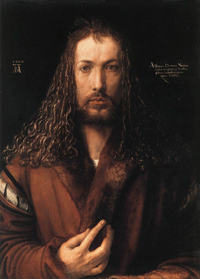 Albrecht Durer Albrecht Durer
Answer
to Name
This Famous Person Game - October 2016
by Mike McLeod
 Albrecht Durer was born in Nuremberg, Bavaria, on May 21, 1471. He became one of the greatest artists of the Renaissance. His father was a goldsmith, and from him, he learned skills that he put to use as an engraver. Dürer’s printmaking and engraving made him famous across Europe with a wide dispersion of his work.
Dürer traveled much studying art, and he corresponded with Leonardo da Vinci and Raphael. He was employed by Holy Roman Emperor Maximillian I.
Also an author, Dürer wrote Four Books on Human Proportion, The Teaching of Measurements (a book on geometry), and Instructions of the Fortifications of Towns, Castles and Large Villages.
Sometimes, it is best for an artist’s work and words to speak for himself.
|
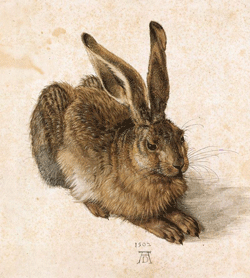
|
Young Hare, 1502.
|
|
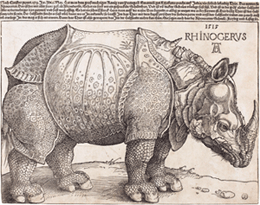
|
Woodcut of The Rhinoceros, 1515. “If a man devotes himself to art, much evil is avoided that happens otherwise if one is idle.”
|
Having never seen an Indian rhinoceros, Durer created this woodcut from just a description and a rough sketch given to him.
|
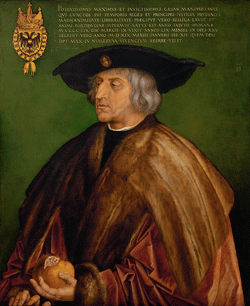
|
Portrait of Maximillian I, 1518. “No single man can be taken as a model for a perfect figure, for no man lives on earth who is endowed with the whole of beauty.”
|
|
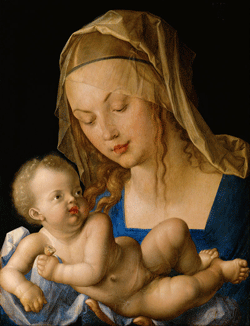
|
Virgin and Child with a Pear, 1512. “The artist is chosen by God to fulfill his commands and must never be overwhelmed by public opinion.”
|
|
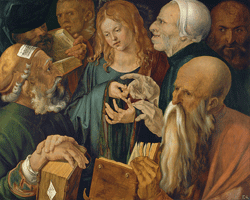
|
Christ Among the Doctors, 1506. “What beauty is, I know not, though it adheres to many things.”
|
Dürer painted this in just five days while in Rome.1
|
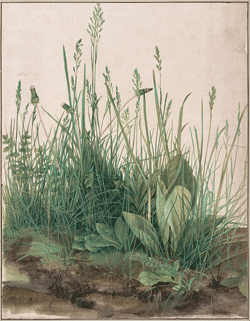
|
The Large Piece of Turf, 1503. “As I grew older, I realized that it was much better to insist on the genuine forms of nature, for simplicity is the greatest adornment of art.”
|
|
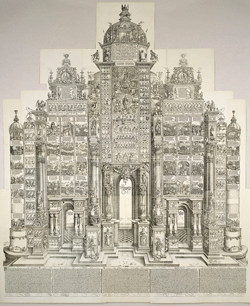
|
Triumphal Arch, 1514.
|
Dürer also painted and engraved works featuring groups of people and buildings, such as Adoration of the Magi and The Triumphal Arch. He is famous for: Adam and Eve; Apocalypse (a series); Knight, Death, and the Devil; Saint Jerome in his Study; and Praying Hands.
This year, a bronze engraving by Dürer was found at a French flea market and purchased for a few euros. The new owner donated the work, Mary Crowned by an Angel, to the Staatsgalerie museum in Stuttgart, Germany, where it once resided.2
Albrecht Dürer passed away on April 6, 1528, but almost five centuries later, he remains recognized as one of the great artists of the Renaissance.
He was correctly identified by Ted Carlton of Utah and Sherron Lawson.
-----------------------
1 National Gallery of Art, nga.gov, “Dürer, Albrecht.”
2 Breitbart.com, “500-year-old German engraving surfaces at French flea market,” Aug. 5, 2016.
Credit: Wikipedia.org
|